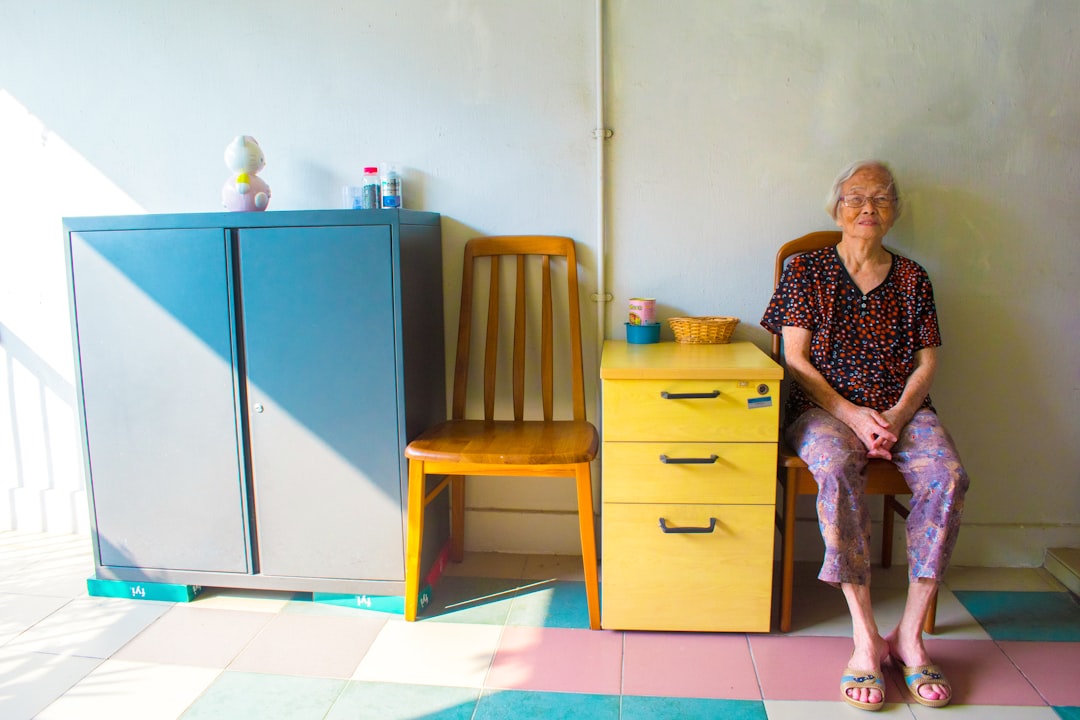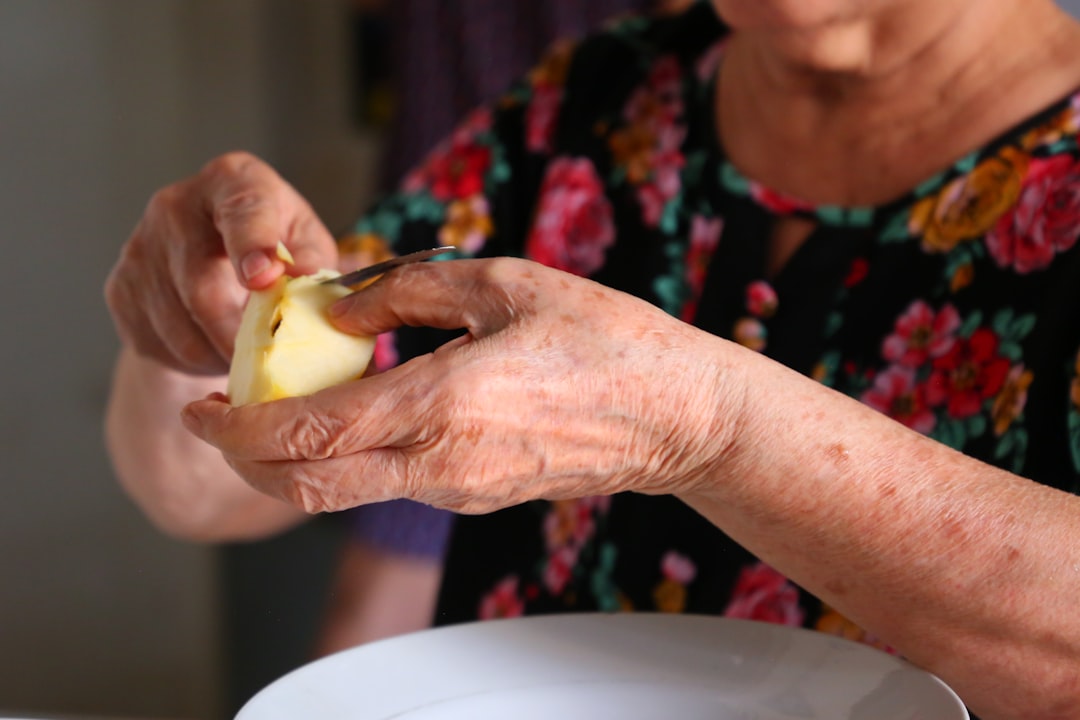

Engage prospects with a scan and streamline customer engagement with FREE QR code marketing tools by Sona – no strings attached!
Create a Free QR CodeFree consultation

No commitment

Engage prospects with a scan and streamline customer engagement with FREE QR code marketing tools by Sona – no strings attached!
Create a Free QR CodeFree consultation

No commitment
Adult day care centers are evolving rapidly to meet the increasing demands of an aging population and the growing need for high-quality, supportive care services. As centers strive to deliver more person-centered programming, many still struggle with collecting timely, actionable feedback from clients and families. Traditional feedback methods such as paper surveys or manual comment cards create barriers to participation; responses are sporadic, participation rates are low, and data often goes missing, leading to unseen patterns and missed opportunities for targeted improvements.
QR codes provide a seamless bridge between daily center operations and digital feedback channels. For adult day care centers, QR codes make it easy for attendees, families, and staff to share their experiences instantly using their smartphones, with no app downloads or complicated instructions required. This connectivity surfaces real-time care gaps, enables timely responses to subtle dissatisfaction, and improves regulatory compliance, preventing high-value prospects or engaged families from going untracked or unheard.
By strategically placing QR codes throughout your center and programs, adult day care leaders can streamline feedback collection, enable real-time engagement, and drive smarter decision-making that benefits clients and caregivers alike. This guide explains how QR-enabled feedback fills data blind spots, helps centers engage prospective and active clients before they lose interest, and supports continuous training and compliance. The result is a more responsive, data-informed care model that supports better outcomes for everyone involved.

Many adult day care centers miss valuable insights because analog forms are slow, hard to manage, and easy to ignore. Caregivers are busy, clients may have limited mobility or dexterity, and staff have limited time to sort, digitize, and interpret paper responses. QR codes connect the physical environment to digital platforms, transforming feedback collection for clients, families, and staff. One scan takes a participant to a mobile-optimized form that can capture structured data, free-text comments, and even photos, then route it to the right person for action.
The shift from analog to QR-enabled feedback changes the game for operations leaders. Digital inputs are timestamped, tagged by location, and stored in a centralized system. This creates a continuous loop: data is captured at the point of service, analyzed within hours, and acted on before small issues become complaints. With tools like Sona QR, centers can centralize code creation, automate response workflows, and visualize trends by program type, staff shift, or daypart.
Advanced tools allow granular customization of QR experiences by persona and context. A family member may receive a short post-visit check-in survey with an option to request a care conference, while a client may see a simplified two-question survey after an activity. Integrating with your CRM enriches audience insights: satisfied respondents can be invited to leave public reviews or testimonials, while those who express concerns trigger follow-up outreach from care managers.

Adult day care leaders often struggle to connect offline interactions with digital systems that drive action. Paper forms, static brochures, and phone hotlines do not produce timely or complete data. That gap leads to missed opportunities for improving daily care, addressing safety concerns, showcasing program value to prospective families, and documenting compliance efforts. QR codes resolve these gaps by making it easy to act in the moment and by turning everyday interactions into measurable signals.
The benefits apply across marketing, operations, and compliance. A flyer with a QR code becomes an instant lead form. An appointment card with a QR code becomes a satisfaction checkpoint. A staff training poster with a QR code becomes a compliance attestation capture. This flow builds a single source of truth: what was scanned, where, by whom, and what happened next. The result is faster feedback, higher participation, and clearer visibility into what is working inside the center.
With real-time insight, staff can prioritize outreach, tailor communications to family needs, and close gaps in satisfaction. Leaders can measure the impact of program changes, test new offerings, and align budget to what drives outcomes for clients and families.

Choosing the right QR code format ensures your use case delivers value right away. For adult day care centers, the priority is frictionless feedback and streamlined communication. Formats should support fast responses, low cognitive load, and accurate data capture while respecting privacy and consent.
Several formats stand out for this vertical. In each case, think about the end destination and the action you want the scanner to take. Keep landing pages mobile-first and accessible, with large fonts, high contrast, and minimal required fields when possible.
Dynamic QR codes are particularly useful because they can be edited without reprinting, and they track scan analytics. Static codes can be useful for evergreen materials like a general contact card or a fixed information page. A centralized platform like Sona QR supports both formats, allows you to manage codes at scale, and keeps your data clean and attributable.

Growth opportunities are often hiding in plain sight: the entrance sign, the transportation vehicle, the caregiver’s folder, or the lunch menu. Every one of these surfaces can trigger digital engagement when paired with a clear QR code and a benefit-driven call to action. The goal is to meet people where they already are and make it effortless to share an opinion, ask for help, or raise a hand for a tour.
Survey fatigue is a risk if codes are placed randomly. Instead, align each placement with a moment of relevance. After a meal, ask about taste and portion size. At the exit, ask if the family’s questions were answered. On the ride home, ask the client or caregiver to rate punctuality and comfort. This context makes participation feel natural and useful.
By aligning QR placements with real-world touchpoints, you ensure that feedback flows continuously into your system. Over time, you will identify common friction points and high-satisfaction moments, then adjust staffing, menus, and activities to improve outcomes.
QR codes work best when tied to everyday interactions that matter to clients and families. They shorten the distance between a thought and an action, which means you capture more nuance and trends while memories are fresh. For adult day care centers, three categories consistently produce value: program feedback, family communication, and compliance.
Consider these practical examples. Each one reduces friction, captures data that was previously lost, and creates a trigger for timely follow-up by the right team member.
You can also integrate QR codes into therapy sessions, transportation, and special events. For example, a code on the therapy room door can capture pre-session goals and post-session outcomes. A code on a field trip permission sheet can collect consent and emergency contact updates. These use cases turn fleeting moments into structured insight and support better adult day care payment solutions by demonstrating value and responsiveness. See similar applications in care homes.
Every QR scan reveals something about the person behind it: their interests, context, and readiness for engagement. By deploying multiple QR codes across your center and community, you can build segments automatically and use that intelligence to communicate more effectively. The result is a virtuous cycle where feedback fuels personalization, which in turn boosts participation and satisfaction.
Segmenting with intent helps you tailor messages for prospective families, current clients, and referral partners. Prospects who scan a brochure at a clinic may be in the research stage. Families who scan an appointment card after a care conference are in the evaluation stage. Current clients who scan an activity survey are in the retention and loyalty stage. Each action can trigger a different follow-up sequence.
With Sona QR, each code becomes a smart entry point that collects data you can act on. Over time, you will see which segments respond to which offers, which placements convert to tours, and which content topics drive trust and attendance.
Select a concrete business or client outcome: then design the QR experience backward from that goal. For adult day care centers, common goals include improving meal satisfaction, accelerating tour requests, confirming staff training, or streamlining incident reporting. Clarity at this stage prevents scattershot deployment and supports measurable impact.
Decide whether you need a static or dynamic code. Static codes point to a fixed URL, which is fine for evergreen destinations like a general contact page. Dynamic codes can be edited after printing and include analytics, which is ideal for feedback forms, time-bound campaigns, and compliance workflows.
Good design drives scans. Keep the code large enough to be scanned from a reasonable distance and ensure there is high contrast. Add a short, benefit-driven call to action that sets expectations about what happens after scanning. Before you launch, test in real-world conditions to confirm accessibility and usability.
Start with a few placements that align with your primary objective and expand based on performance. For an operations goal like meal feedback, use table tents and tray liners. For a growth goal like inquiries, use brochures, physician referral packets, and community bulletin boards.
Measurement turns scans into outcomes. Set benchmarks, review early results, and iterate. Small changes in placement, CTA language, or form length can significantly improve scan rates and completion rates.
Following this checklist helps centers avoid common pitfalls and build a repeatable, data-driven feedback engine that serves clients, families, and staff.
Facilities often lack real-time visibility into how feedback influences decisions, quality, and growth. QR tracking connects the dots from scan to action to outcome. When you know that a caregiver scanned a brochure at a clinic, requested a tour, and later enrolled a parent, you can attribute impact to the right channels and invest with confidence. See offline attribution. The same applies to operational improvements: when you can show that meal satisfaction improved after a menu change triggered by QR data, you have evidence that your process works.
Analytics should be practical and actionable. Start with the basics such as total scans by placement, scan-to-form completion rate, and average response time for negative feedback. Layer in more advanced views such as program-level sentiment, shift-level performance trends, and the impact of changes in staffing or activity calendars. Use dashboards to surface urgent items such as low ratings in the last 24 hours and route them to on-duty supervisors.
This closed-loop view ensures high-value leads and key cues are not lost. It also strengthens compliance posture by maintaining clean, auditable records of feedback, follow-up, and outcomes.
Once your initial placements are performing, expand thoughtfully. Maintain a balance between collecting valuable data and respecting the time and attention of clients and families. Use rotation, seasonal themes, and varied question types to keep engagement strong. The goal is to make scanning feel like a contribution to better care, not a chore.
Train staff to promote QR use with empathy and clarity. A simple prompt such as “Would you mind rating today’s activity using this quick code? It helps us plan next week” can double participation. Display clear privacy notices when collecting sensitive information and outline how feedback will be used to improve care.
Creative applications are plentiful. Try QR stickers on transportation logs for real-time ride feedback, or add QR-enabled name tags for staff to confirm training or accept kudos from families. These micro-interactions compound into a culture of continuous improvement.

Adult day care chains often struggle with low survey participation and unclear program insights. After placing branded QR table tents in dining areas with a bold “Scan to rate today’s meal,” a regional provider saw a 40 percent spike in meal satisfaction responses within one month. The data surfaced a recurring preference for softer textures and hotter soups, which reduced plate waste and improved overall ratings. This change would have been hard to detect with occasional paper forms.
Another center deployed QR codes at activity stations with rotating weekly questions. Insights revealed that movement-based activities had higher satisfaction in the morning, while discussion-based activities performed better in the afternoon. Reallocating staff and adjusting schedules increased attendance and lifted weekly satisfaction scores across the board. Families noticed the improvements and left more positive Google reviews QR after being prompted via QR to share testimonials.
QR codes can also simplify compliance. A dementia care center added QR-driven training confirmations to staff areas. Each certification module had a short quiz embedded in a mobile form, and staff scanned to attest completion. Audit preparation time dropped by 30 percent because training records were centralized and timestamped. Similarly, a chain added QR incident reporting forms near high-traffic areas, with automated alerts to supervisors. Response times improved and documentation quality increased.
For outreach, centers added QR codes to brochures distributed in clinics and community centers. Scans routed to a tour request with a two-question needs assessment. The centers saw higher-quality inquiries and better-prepared tours, since staff had context before the visit. At caregiver support events, QR badges invited families to record a 20-second testimonial on what they appreciated. With consent, those clips became valuable marketing assets for social media and websites. See ideas in senior care marketing.
These examples demonstrate a consistent theme: thoughtfully designed QR workflows convert everyday moments into actionable data. That data powers service improvement, strengthens marketing, and supports adult day care payment solutions by demonstrating clear value to clients and stakeholders.
QR success depends on human-centered design as much as technology. Keep forms short, use plain language, and set expectations about what will happen after scanning. Offer alternative feedback options for those who prefer paper or in-person conversations. Respect privacy by avoiding unnecessary sensitive fields and by stating how feedback will be used.
Avoid deploying codes in low-traffic or inconvenient spots. A QR above eye level, behind glass, or in a dim hallway will perform poorly. Do not treat QR codes as a set-and-forget tactic. Review performance weekly, refresh questions, and rotate placements to reduce banner blindness. When feedback suggests a change, act quickly and close the loop by communicating the improvement. Trust grows when families see their input driving results.
QR codes are a transformative strategy for adult day care centers, turning every physical interaction and outreach material into a source of real-time feedback. Their integration solves the persistent problem of missing data and overlooked engagement signals, empowering leaders to address compliance, regulatory, and operational challenges before they affect satisfaction or revenue.
Adult day care centers using QR-based feedback see measurable benefits across client engagement, staff training, onboarding, and compliance documentation. By embedding feedback into every workflow, from transportation to daily activities, centers create a responsive, data-driven culture that anticipates issues and delivers more adaptable, person-centered care. If you are ready to operationalize this approach, Sona QR can help you create dynamic codes, manage campaigns at scale, and connect scans to outcomes. Start creating QR codes for free, then use Sona to attribute impact across the full journey from scan to enrollment.
QR codes have transformed adult day care centers from traditional feedback methods into dynamic, real-time engagement tools. Whether it’s gathering valuable client and caregiver feedback, enhancing communication, or improving service quality, QR codes replace cumbersome paper surveys with instant, mobile-friendly interactions that capture actionable insights. Imagine knowing exactly which programs or services resonate most with participants—and being able to respond immediately to their needs.
With Sona QR, you can create dynamic, trackable QR codes in seconds, update feedback campaigns without reprinting materials, and connect every scan directly to measurable improvements in care. No lost feedback, no delayed responses—just smarter, more responsive adult day care operations. Start for free with Sona QR today and turn every scan into meaningful feedback and better care outcomes.
Adult day care centers provide person-centered programming including social activities, therapy services, meal programs, transportation, compliance training, and family communication support.
QR codes enable real-time, mobile-friendly feedback collection from clients, families, and staff, allowing centers to identify care gaps quickly, respond to concerns promptly, and improve regulatory compliance.
The article does not specifically detail payment processing solutions for adult day care centers.
QR codes on print materials like brochures and flyers allow families to request tours, ask questions, or complete readiness checklists instantly, increasing engagement, lead quality, and tracking of marketing effectiveness.
While the article does not explicitly mention cloud-based attendance tracking, QR code systems centralize data collection, automate workflows, and improve compliance documentation, which supports efficient attendance tracking and operational insights.
Use Sona QR's trackable codes to improve customer acquisition and engagement today.
Create Your FREE Trackable QR Code in SecondsJoin results-focused teams combining Sona Platform automation with advanced Google Ads strategies to scale lead generation

Connect your existing CRM

Free Account Enrichment

No setup fees
No commitment required

Free consultation

Get a custom Google Ads roadmap for your business






Launch campaigns that generate qualified leads in 30 days or less.
